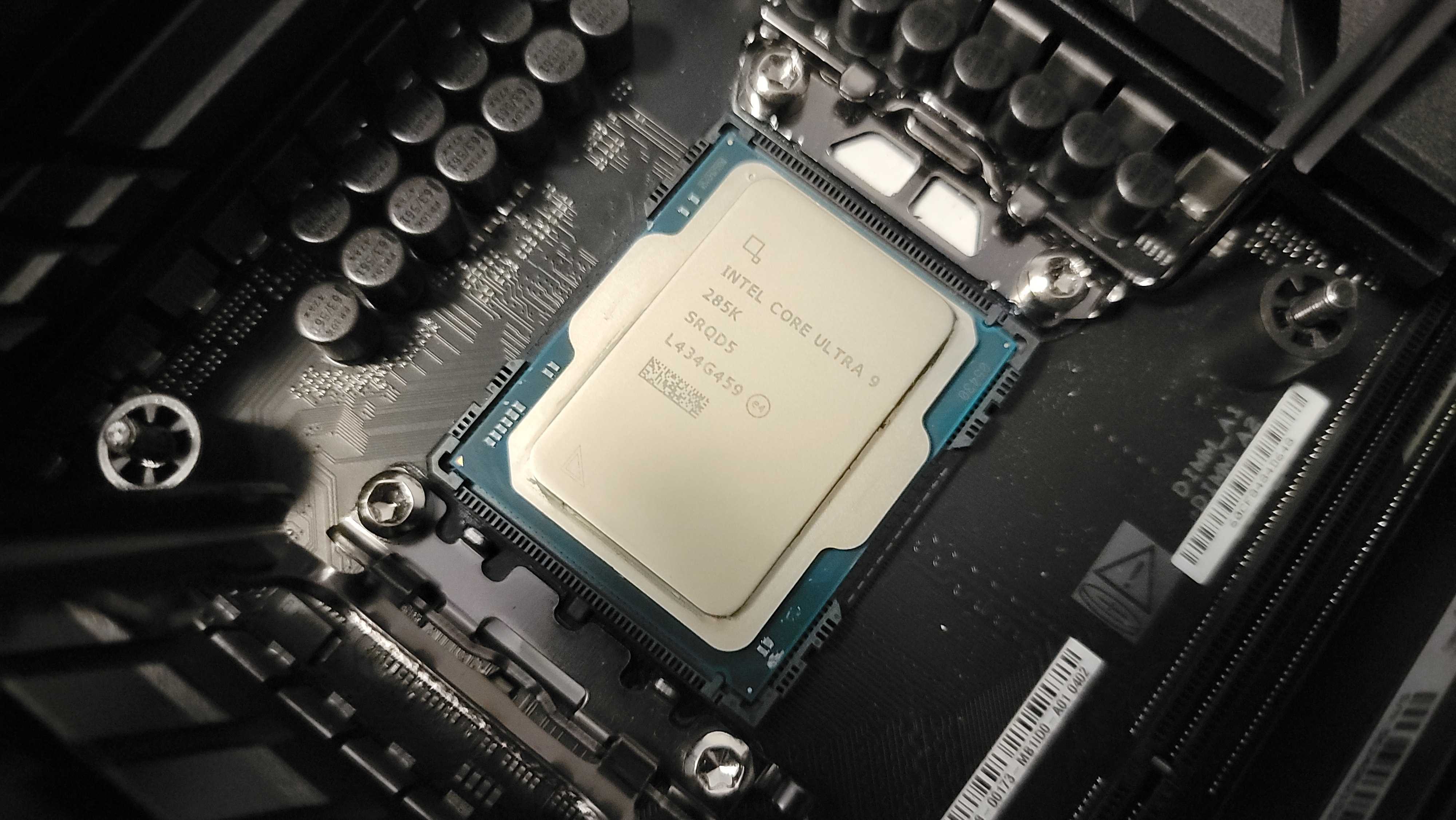Intel's Core Ultra 9 285K has been on the streets for six months, and in those six months its performance has improved — if only a little bit. Recent retesting from Phoronix reveals that the Arrow Lake flagship has seen a 6% performance increase on average across a litany of benchmarks on Linux over its original launch testing numbers. This increase is without using the new "200S Boost" BIOS memory overclock that Intel announced today, though our own testing suggests that's a relatively minor change.
The Core Ultra 9 285K, released in October 2024, is Intel's flagship processor for the 'Arrow Lake' lineup, and was something of a stinker on launch. While it put up impressive productivity and multi-core results, its gaming performance sank below Intel's previous-gen Raptor Lake Refresh at launch. And let's note that the Raptor Lake Refresh also a fairly disappointing release.
Thankfully for Intel, it has worked to improve on the poor day-one results, and subsequent incremental BIOS updates and driver tweaks have helped Arrow Lake grow in performance. Using Ubuntu 25.04, Phoronix's tests show solid improvements made in Arrow Lake benchmarks, especially in single-core and gaming workloads.
This boost is likely primarily due to optimizations dealing with Intel's recent big-core/small-core design philosophy, using a mixture of performance and efficiency cores to balance out workloads. The Linux kernel has seen some optimizations made on its end to better schedule tasks across the different sizes of cores, with Intel BIOS updates also working toward the same end. Now that more single-core tasks are being correctly assigned to performance cores, the chip can work at higher speeds and power.
These new Linux-based tests arrive the same day as Intel's announcement of the "200S Boost" BIOS feature. Intel is now covering an array of overclocking features under hardware warranty, including memory and fabric overclocking, seeking to further increase practical performance without too much nitty-gritty tweaking or risking voided warranties for non-OC-inclined users. In our testing of the settings, we found that the gains lined up perfectly with expected memory overclocking performance, resulting in a 7.5% improvement in speeds. While there are some strict ceilings and guardrails around the feature, it's still an effective way to draw more water from the Arrow Lake stone.
The combination of incremental improvements to Linux P/E core scheduling and the 200S Boost bombshell mean that Arrow Lake has increased its stature among the CPU crop, especially for Linux users. Our updated testing using the 200S Boost doesn't change its standing much among other CPUs (as we test with XMP enabled on all CPUs when able), but the boost to 285K's Linux performance looks to be decent as well. It's a bit difficult to quantify precisely how much Arrow Lake's performance has improved, particularly against other CPUs that may also have seen improvement. It's still a bit of a paradigm shift for driver and software updates to boost performance of CPUs over time.
Follow Tom's Hardware on Google News to get our up-to-date news, analysis, and reviews in your feeds. Make sure to click the Follow button.

 6 months ago
121
6 months ago
121







 English (US) ·
English (US) ·